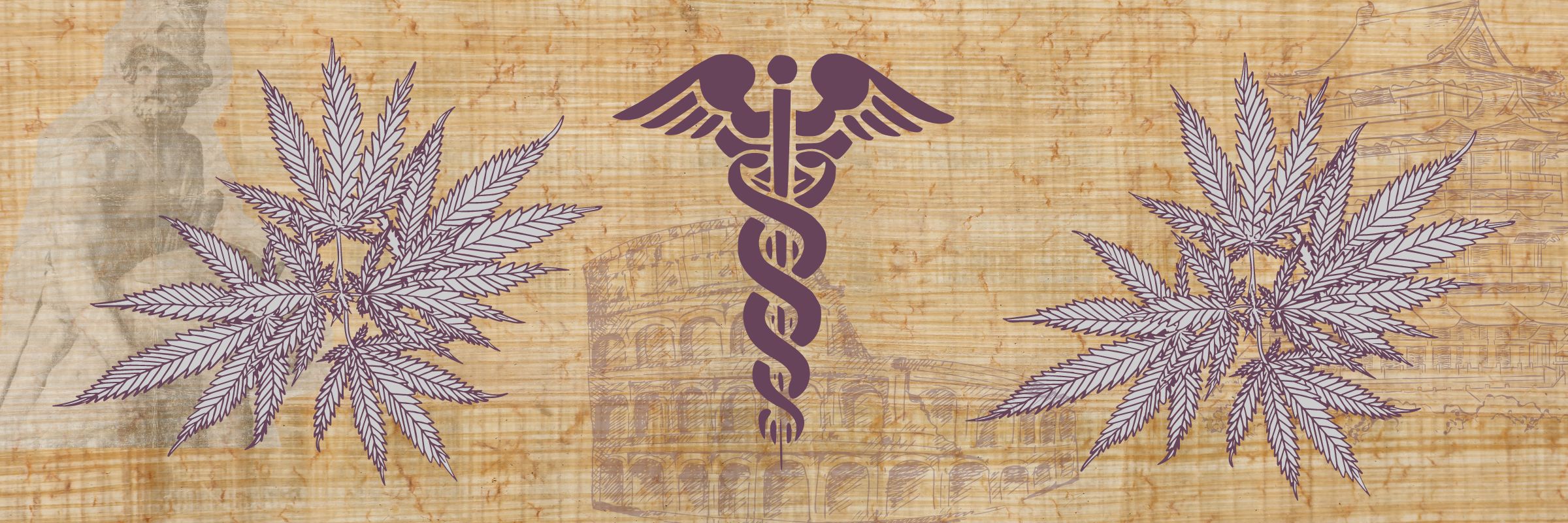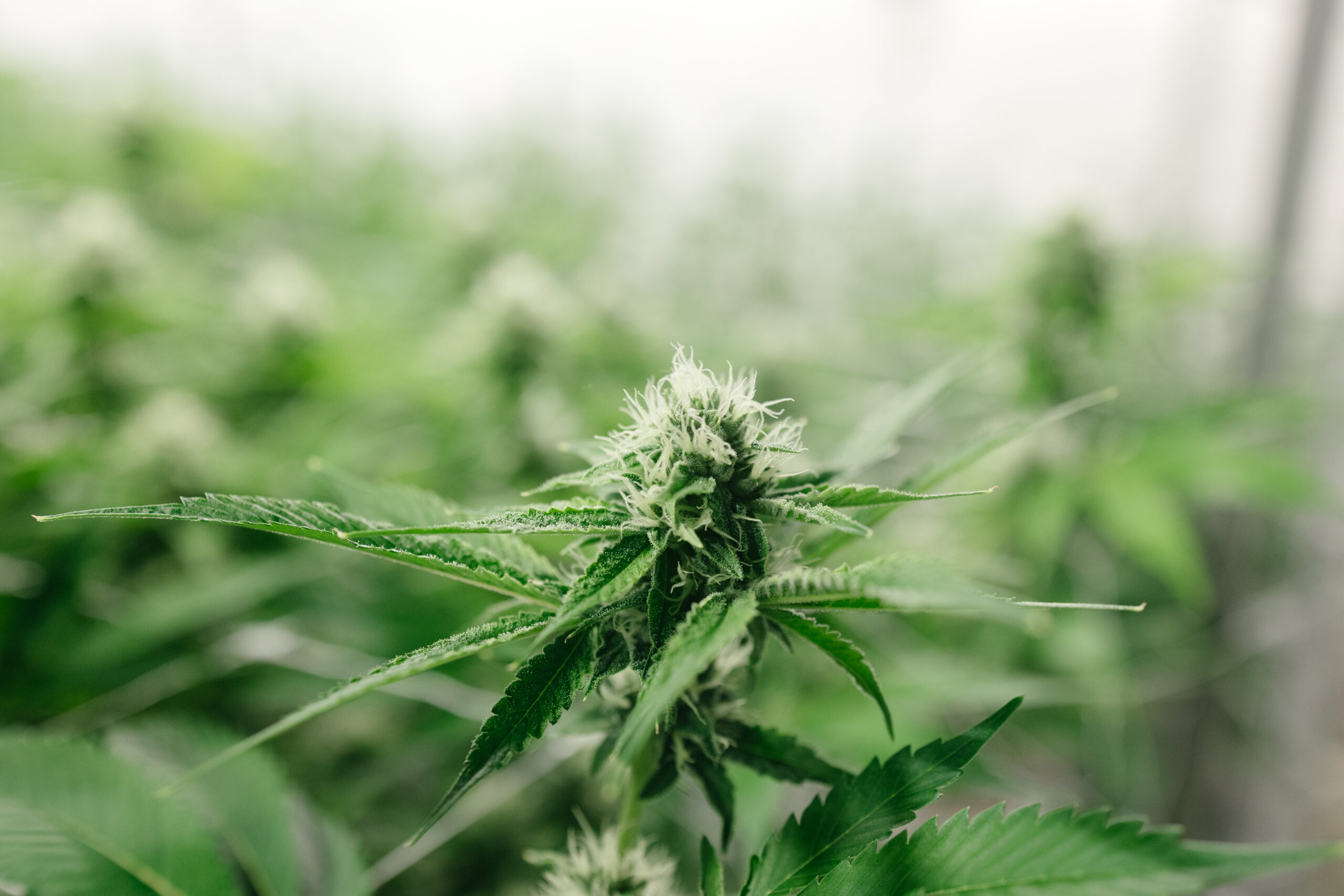
Author: Autumn Lopez
From the advent of early agriculture in the neolithic period to the imperial halls of ancient China, cannabis has grown and evolved alongside humans for millennia. Long used for its medicinal properties and strength as a fiber for textiles, our species’ connection to this plant can be traced back nearly as far as civilization itself, joining alongside humans throughout some of the most important milestones in our collective history. In this blog, we’ll trace the use of cannabis through time and discover some of the many ways people have incorporated this amazing plant into their lives. To find out where it all began, we must travel back millions of years, long before modern homosapians roamed the earth.
19 Million Years Ago Cannabis Species Emerges
The earliest evidence of cannabis on earth can be traced back roughly 19 million years ago to the steppes of Central Asia during the early Miocene epoch (Rull 2022). Ancestors of modern-day land mammals first appeared in the fossil record during this period alongside traces of cannabis pollen found in the North Eastern Tibetan Plateau, suggesting this is the likely origin of the plant (Encyclopaedia Britannica 1998).
10,000 BCE - 8,000 BCE Earliest Human Use
2700 BCE: Chinese Medicinal Practices
77 CE: Graeco-Roman Roots
The application of cannabis in the ancient Greek and Roman world was as vast as their culture of philosophy and scholarship, with many references listing cannabis-infused cakes as a common dessert. Some scholars even cite a potential reference to cannabis in Homer’s The Odyssey around the 8th century CE. Pliny the Elder makes explicit mention of its uses to ease inflammation from gout in his Naturalis Historia around 77 CE (Crocq 2020).
190 CE: Surgical Use
800 CE: European Adoption
Although evidence suggests Europeans cultivated hemp for fiber and grain since the Roman period, the first appearance of cannabis used for medical purposes appears in the 9th-century text Old English Herbarium as a treatment for various common illnesses (Rull 2022).
1839: Cannabis in Western Medicine
1996: Medical Cannabis Legalization in the US
2024 And Beyond
As of 2024, 39 states have legalized medical marijuana, with many additional states currently considering legislation to expand access. According to a 2022 Pew Research Center survey, approximately 88% of U.S. adults believe cannabis should be legal recreationally and/or medically. With public support at a historic high, many predict the continued expansion of legalization efforts in the coming years. As things stand now, an astounding 79% of Americans live in a county with a marijuana dispensary, either medical or recreational, with more on the way (Pew Research Center 2024)!
Works Cited
Blaszczak-Boxe, Agata. 2014. “Marijuana’s History: How One Plant Spread Through the World.” Livescience.Com, October 17, 2014. https://www.livescience.com/48337-marijuana-history-how-cannabis-travelled-world.html.
Crocq, Marc-Antoine. 2020. “History of cannabis and the endocannabinoid system.” Dialogues in Clinical Neuroscience 22 (3): 223–28. https://rb.gy/fgidal
Gardner, Fred. n.d. “The Remarkable Dr. William Brooke O’Shaughnessy | O’Shaughnessy’s.” https://beyondthc.com/the-remarkable-william-brooke-oshaughnessy-md/.
Pacula, Rosalie Liccardo, and Rosanna Smart. 2015. “Medical Marijuana and Marijuana Legalization.” Annual Review of Clinical Psychology 13: 397–419. https://rb.gy/di3ptg
Pain, Stéphanie. 2015. “A Potted History.” Nature 525 (7570): S10–11. https://doi.org/10.1038/525s10a.
Pew Research Center. 2024. “Most Americans Live in a Legal Marijuana State, Have a Cannabis Dispensary in Their County | Pew Research Center.” March 1, 2024. https://www.pewresearch.org/short-reads/2024/02/29/most-americans-now-live-in-a-legal-marijuana-state-and-most-have-at-least-one-dispensary-in-their-county/.
Randall, Robert. 2004. “The History of Medicinal Cannabis.” The State of Montana. https://leg.mt.gov/content/Committees/Interim/2009_2010/Children_Family/Emerging-Issue/mmga-presentation-cannabis-history-aug2010.pdf.
Rull, Valentı́. 2022. “Origin, early expansion, domestication and anthropogenic diffusion of Cannabis, with emphasis on Europe and the Iberian Peninsula.” Perspectives in Plant Ecology, Evolution and Systematics 55 (June): 125670. https://doi.org/10.1016/j.ppees.2022.125670.
The Editors of Encyclopaedia Britannica. 1998. “Miocene Epoch | Plants, Animals, & Fossils.” Encyclopedia Britannica. July 20, 1998. https://www.britannica.com/science/Miocene-Epoch.
The Editors of Encyclopaedia Britannica. 2009. “Hua Tuo | Acupuncture, Moxibustion & Surgery.” Encyclopedia Britannica. May 8, 2009. https://www.britannica.com/biography/Hua-Tuo.



